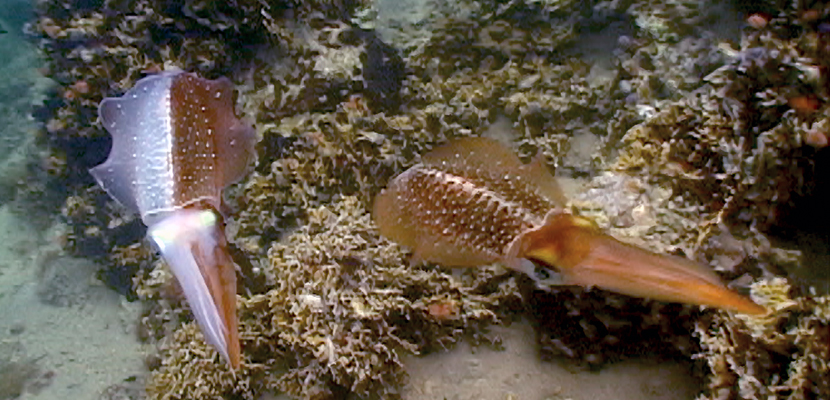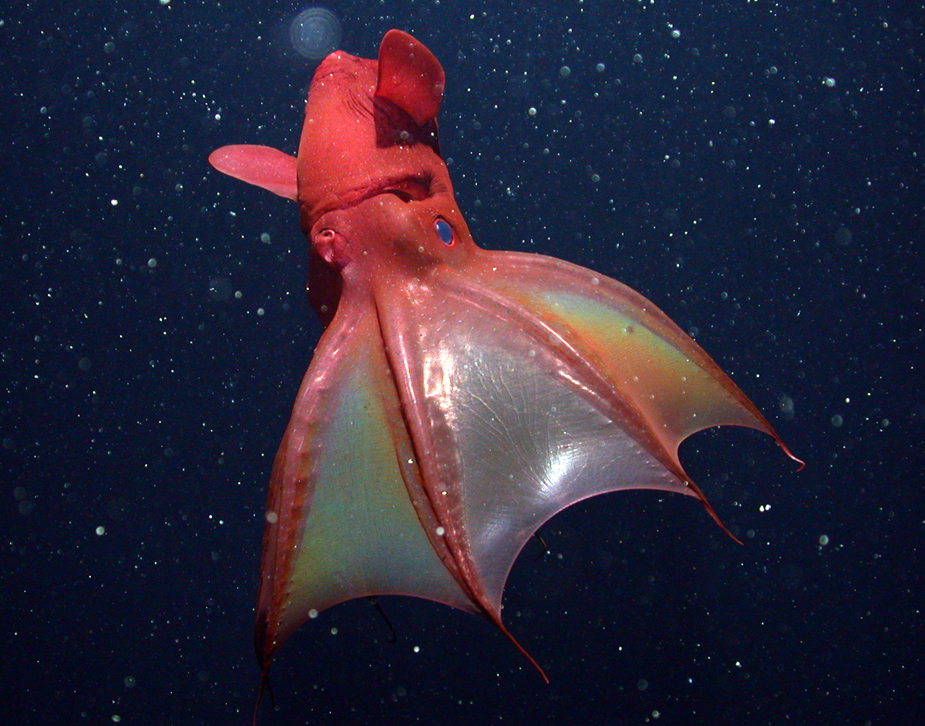
This Article From Issue
January-February 2019
Volume 107, Number 1
Page 56
OCTOPUS, SQUID, AND CUTTLEFISH: A Visual, Scientific Guide to the Oceans’ Most Advanced Invertebrates. Roger Hanlon, Mike Vecchione, and Louise Allcock. 224 pp. University of Chicago Press, 2018. $40.
Aquariums from New England to New Zealand have stories of octopods sneaking out of their tanks and getting up to mischief, whether eating inhabitants of neighboring enclosures or slipping down drainage pipes and back out to sea. This surprising intelligence combined with amazing camouflage abilities have made cephalopods the darlings of the aquatic world. The book Octopus, Squid, and Cuttlefish celebrates these animals through beautiful pictures and an encyclopedic discussion of the animals’ evolution, biology, and behaviors.
Octopus, Squid, and Cuttlefish is written by a trio of experts: ecologist and evolutionary biologist Roger Hanlon, and zoologists Mike Vecchione and Louise Allcock. The authors walk the reader through a detailed discussion of cephalopods’ anatomy, physiology, and behavior, and each chapter ends with engaging photographs and profiles of specific species.

Alamy Stock Photo, Juergen Freund
Cephalopods are in the Mollusca phylum, making them distant relatives of snails and clams. The name cephalopod literally means “head foot” in Greek and refers to the legs spiraling out around their mouths. Nautiluses are outliers in the group as the only animals with external shells—the iconic spirals that echo ocean sounds when held to the ear—and they get a bit of a short shrift in the book. That decision, however, leaves more time to explore the most interesting aspects of the octopuses, squids, and cuttlefish: their surprising intelligence and behaviors.
Octopods, squids, and cuttlefish have large brains, but they also distribute their neurons into their arms. Indeed, two-thirds of an octopus’s neurons are in its arms, allowing the arms to act independently, although overall control is maintained by the brain. These distributed neurons enable cephalopods’ most striking adaptation: the remarkable ability to change their appearance.
Most species of octopods, squids, and cuttlefish can change color in an instant, adopting the tones and patterns of their surroundings. Some species can even alter the texture of their skin to mimic coral or pebbles. Hanlon, Vecchione, and Allock provide a flowchart that shows the decision-making and neural pathway steps a cuttlefish would go through to blend into its environment.
The book includes an unusual picture of a male cuttlefish wooing a mate. On the side facing the female, he displays an alluring (to a female cuttlefish) courtship pattern, while on the opposite side, he shows an aggressive “unilateral silver” pattern to ward off any competitors (below). The two patterns are split right down the cuttlefish’s center line, and according to the authors, if the female were to switch sides, the male would immediately reverse his patterns.

Roger Hanlon
This elaborate display is one of several sneaky techniques in the cephalopods’ mating toolkit. Another tactic is female mimicry, where a smaller male disguises himself as a female to slip past a larger competitor and reach a potential mate. This deceptive technique increases the likelihood the female will use the clever male’s sperm to fertilize her eggs rather than displacing the sperm with that of the larger male.
The main draw of Octopus, Squid, and Cuttlefish is the photographs, which are large and plentiful with informative captions. The meat of the text, however, seems to suffer from indecision about the book’s audience. The book as a whole is an overview of cephalopods, and in that sense it is rather general, but much of the material is dense, and there is an assumption of cephalopod knowledge that seems to contradict the detailed walkthrough of some subjects such as octopus anatomy.

© 2004 MBARI
One example of the book’s mixed presentation is the authors’ discussion of the vampire squid. The animal is featured throughout the book, and I kept waiting for an explanation of the surprising name, which was never provided. This omission drove me to the bane of academics, Wikipedia, for answers (the name comes from its webbed tentacles, which form a cloak-like appearance, not from any dietary peculiarities). Similarly, bobtails are discussed throughout the book, but I had to search through the index to find a page that described what characterizes a bobtail on an animal that does not have a tail to bob.
The book ends with an examination of the relationships between cephalopods and humans. The authors outline possible biomedical and engineering advances we could gain through studying cephalopods, such as soft robotics that move like an octopus’s arm. After reading about the cephalopods’ abilities and behaviors, as well as their potential for advancing our lives, readers might think twice before ordering their next calamari appetizer.
American Scientist Comments and Discussion
To discuss our articles or comment on them, please share them and tag American Scientist on social media platforms. Here are links to our profiles on Twitter, Facebook, and LinkedIn.
If we re-share your post, we will moderate comments/discussion following our comments policy.